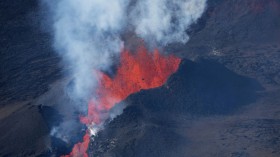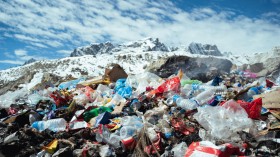Adélie penguins in East Antarctica are not complaining about climate change. The warmer temperatures are precipitating glacial melt, prompting the population of this type of penguins to increase. Research published in BMC Evolutionary Biology reveals that the Adélie penguin population is 135 times greater than it was 19,000 years ago, according to an official statement.
This explosion in population is a result of more breeding grounds becoming available because of shrinking glaciers. Adélie penguins nest on coastal rocky areas free of snow and ice, so the more ice-free coastline, the more space the penguins have to propagate.
In addition to larger breeding areas, the retreating sea ice makes it easier for the birds to forage for their young because greater amounts of sea ice equates to longer hunting times for the penguins.
Jane Younger, the lead author on the study, said that the examination of Adélie penguins' adaptation to climate change in the past will help scientists better understand how the penguin population will adjust in the future.
"Up to now, research has focused on short-term changes in terms of years or decades, but the climate change that is underway right now is likely to have effects over thousands of years," Younger, of the University of Tasmania, Australia, said in a press release.
"We need to consider millennial-scale trends alongside contemporary data to forecast species' abundance and distribution changes under future climate change scenarios."
The penguins will need to have plentiful amounts of krill in order to balance out their expanding population and, as climate change advances, more sea ice and glaciers are predicted to retreat, so populations are expected to continue flourishing. On the other hand, krill eat algae and algae need to attach themselves onto sea ice in order to survive. Therefore, the less sea ice, the less algae, and the less algae, the less krill for the penguins.
Currently, Adélie penguins in East Antarctica have ample food to thrive, but the impacts of climate change on krill, their main food source, is "unclear at this time" according to Younger.
Still, the researchers warn that the environmental impacts of climate change are not the same everywhere and the widespread dispersion of Adelie penguins mean that further away populations are facing different challenges as a result of climate change and are even in decline.
For more great nature science stories and general news, please visit our sister site, Headlines and Global News (HNGN).
© 2024 NatureWorldNews.com All rights reserved. Do not reproduce without permission.





